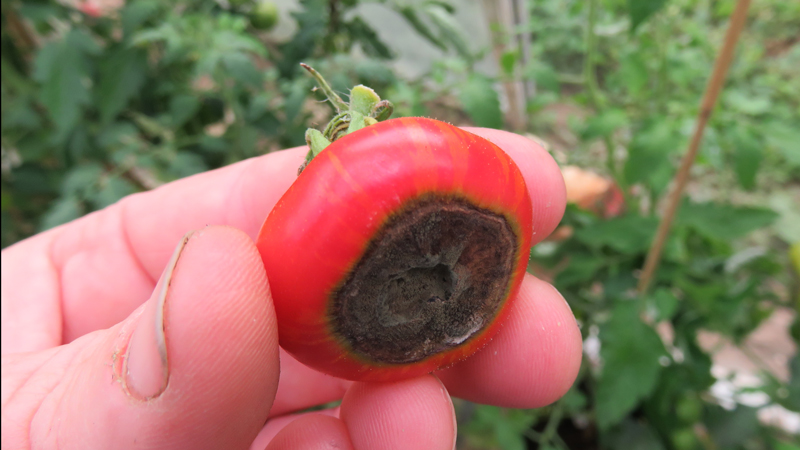If your tomatoes are anything like ours, then they may be a little slow to grow this season, and when they do finally ripen, you may spot a few problems…here’s a quick troubleshooting guide to help!
- Tomatoes ripen, but then start to turn black at the bottom: BLOSSOM END ROT
This is usually caused by a calcium deficiency, which in turn is usually caused by lack of watering. We’d recommend a liquid feed and keeping plants well watered (keep the soil evenly moist) and the next fruits should be ok. - Tomatoes are cracked/split: INCONSISTENT WATERING
Moving from dry to waterlogged soil will cause the tomato skins to split – try to keep the soil consistently moist and this should right itself as the next fruits come through. - Leaves are patchy brown: BLIGHT
Cut off any affected foliage/trusses as soon as you see the first signs of this to try and stop it spreading to the stem/root/fruit. Be careful to water the plants without getting water on the leaves – keeping the leaves dry will help to avoid spreading. If things get bad, you’ll have to count your losses – you can always harvest the green tomatoes and ripen them indoors. - Leaves are patchy yellow: POOR NUTRITION
Try using a liquid feed to give them a boost and make sure they are getting enough water so that they can draw nutrients up from the soil. If the plants are old and it is only the older leaves that are affected then it’s not usually cause for concern. - Leaves are curled: TOO DRY/COLD AT NIGHT
This shouldn’t be a problem at the moment, but as we creep towards Autumn you may start to see this happening. Try to keep temperatures consistent where possible. - Lots of flowers, no tomatoes: POOR POLLINATION
Try disturbing the plants a little and, if they’re in the greenhouse, open a window to let some insects in… - Tiny bugs on the leaves: APHIDS
You can usually hose/wipe off small colonies, but once it is well established then you may need to pinch off and remove the worst areas of foliage. Put something yellow and sticky (a bucket covered with vaseline) in amongst the plants – the aphids will be attracted to this and hopefully you can rescue your plants. A small infestation will do little harm, but a big infestation can be problematic.

